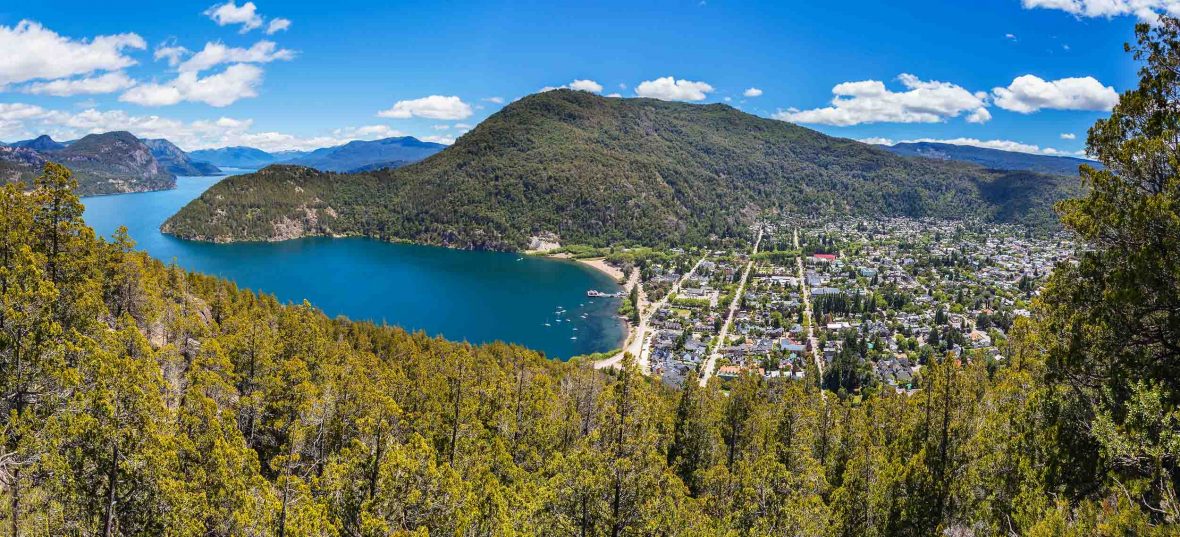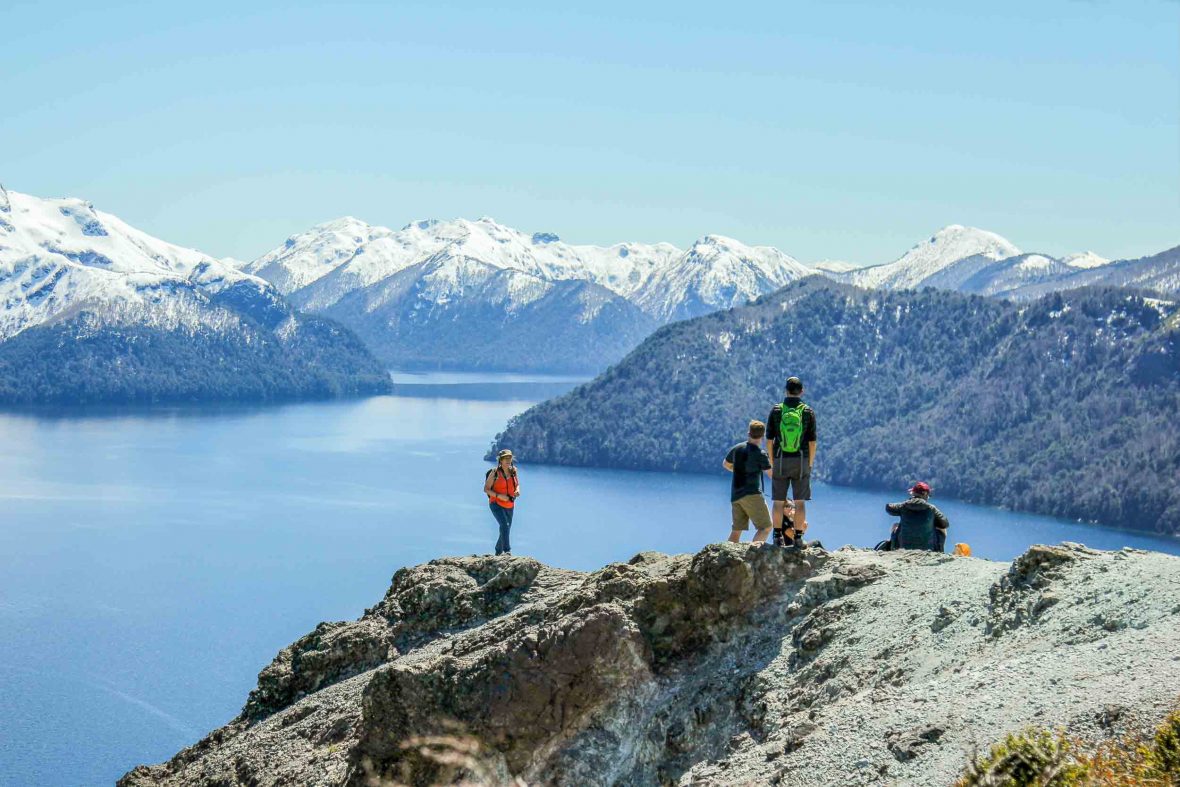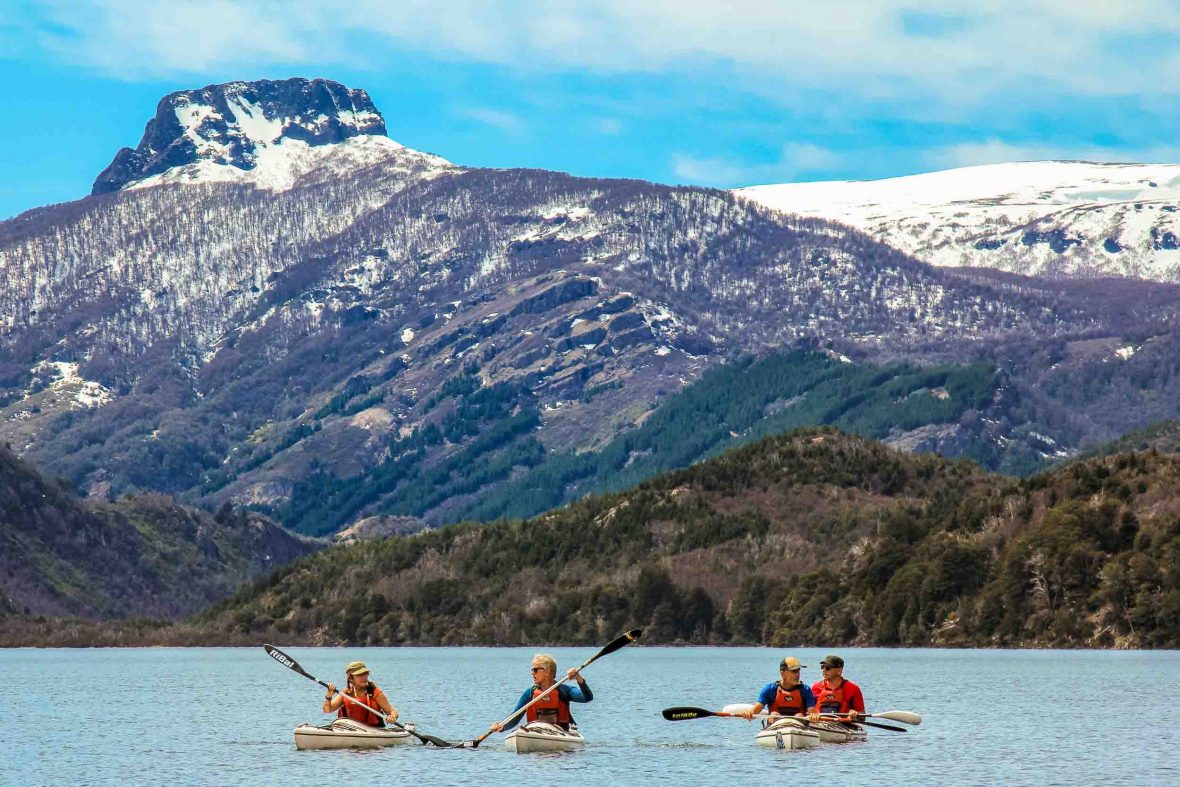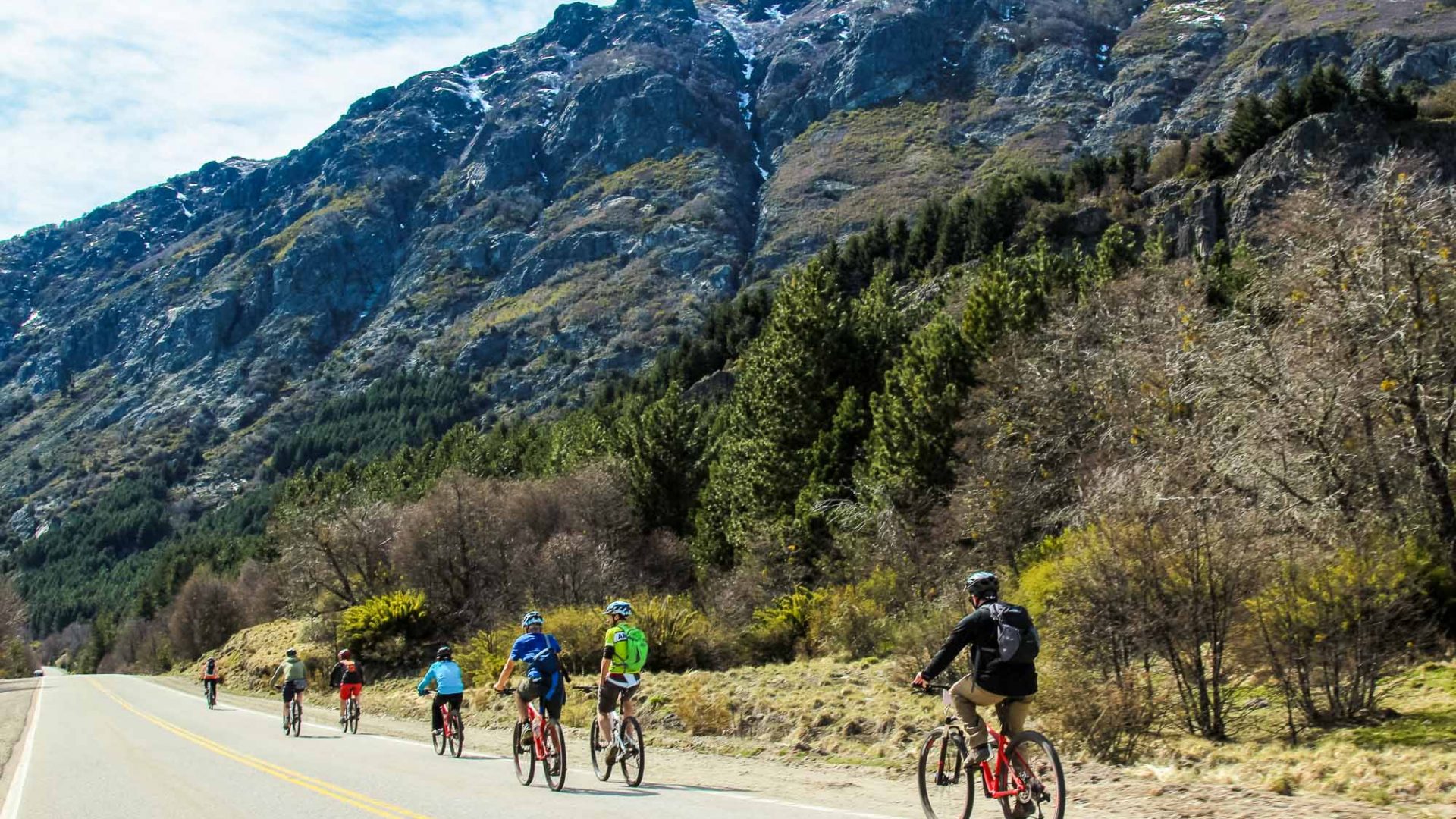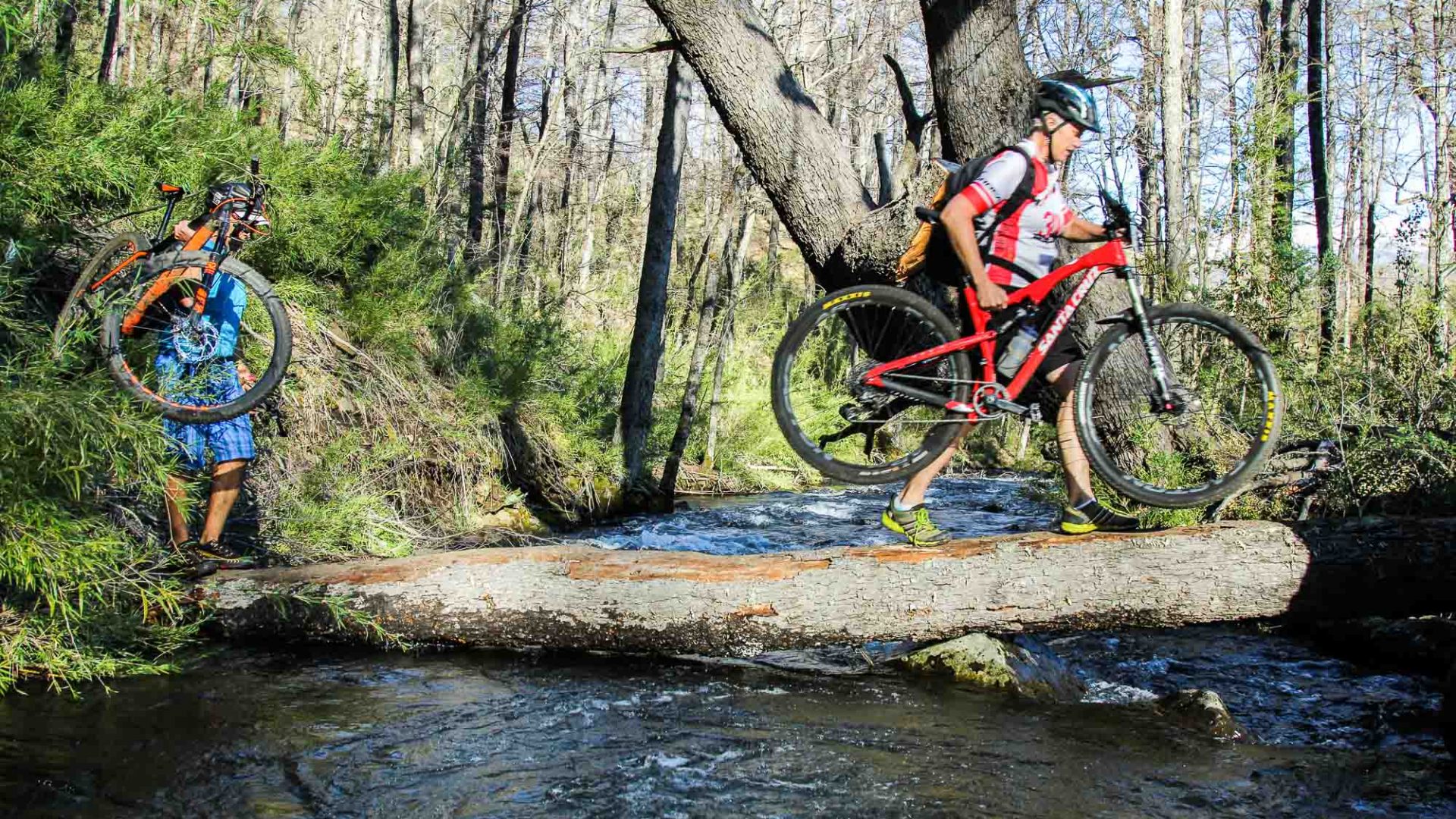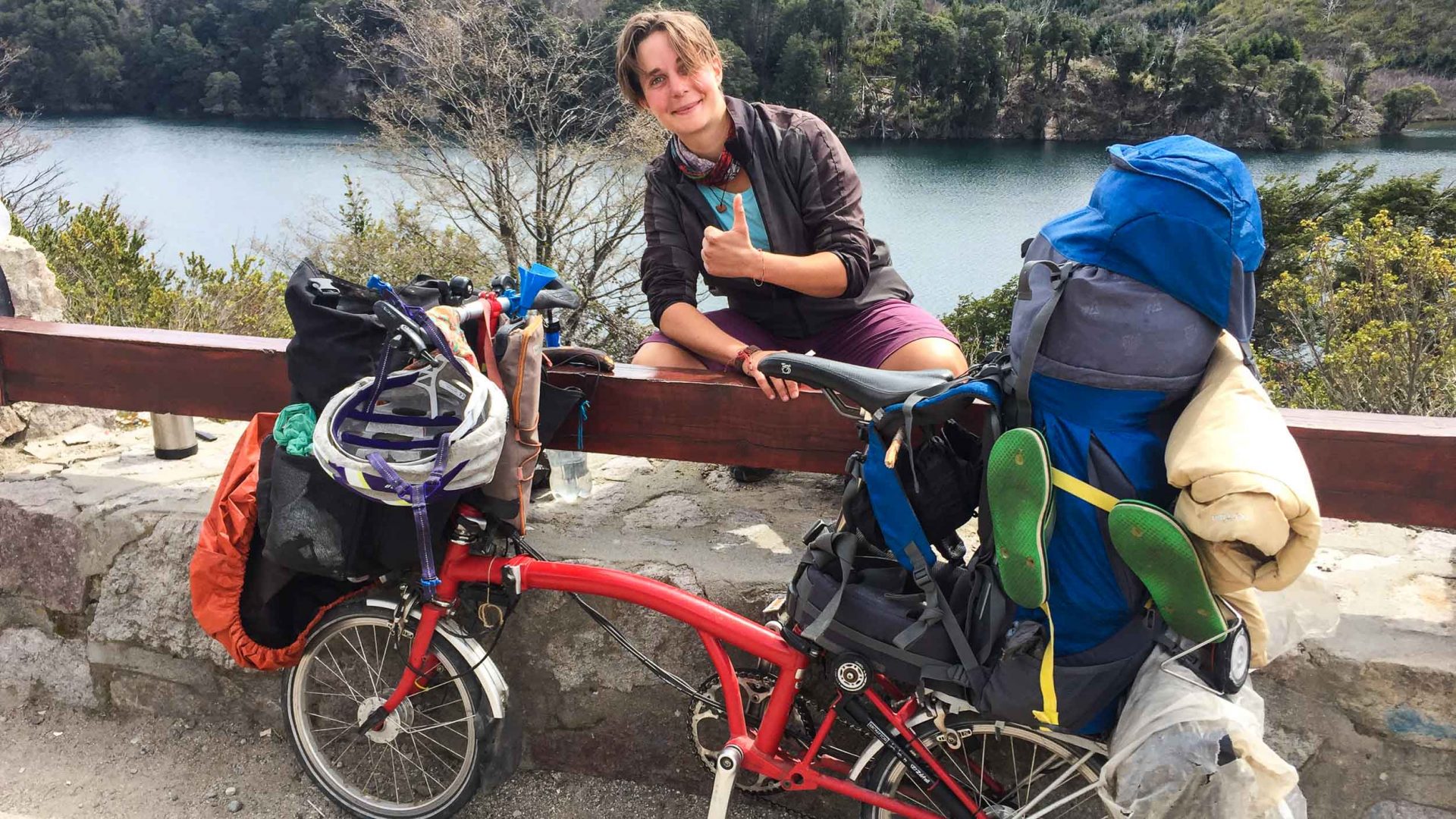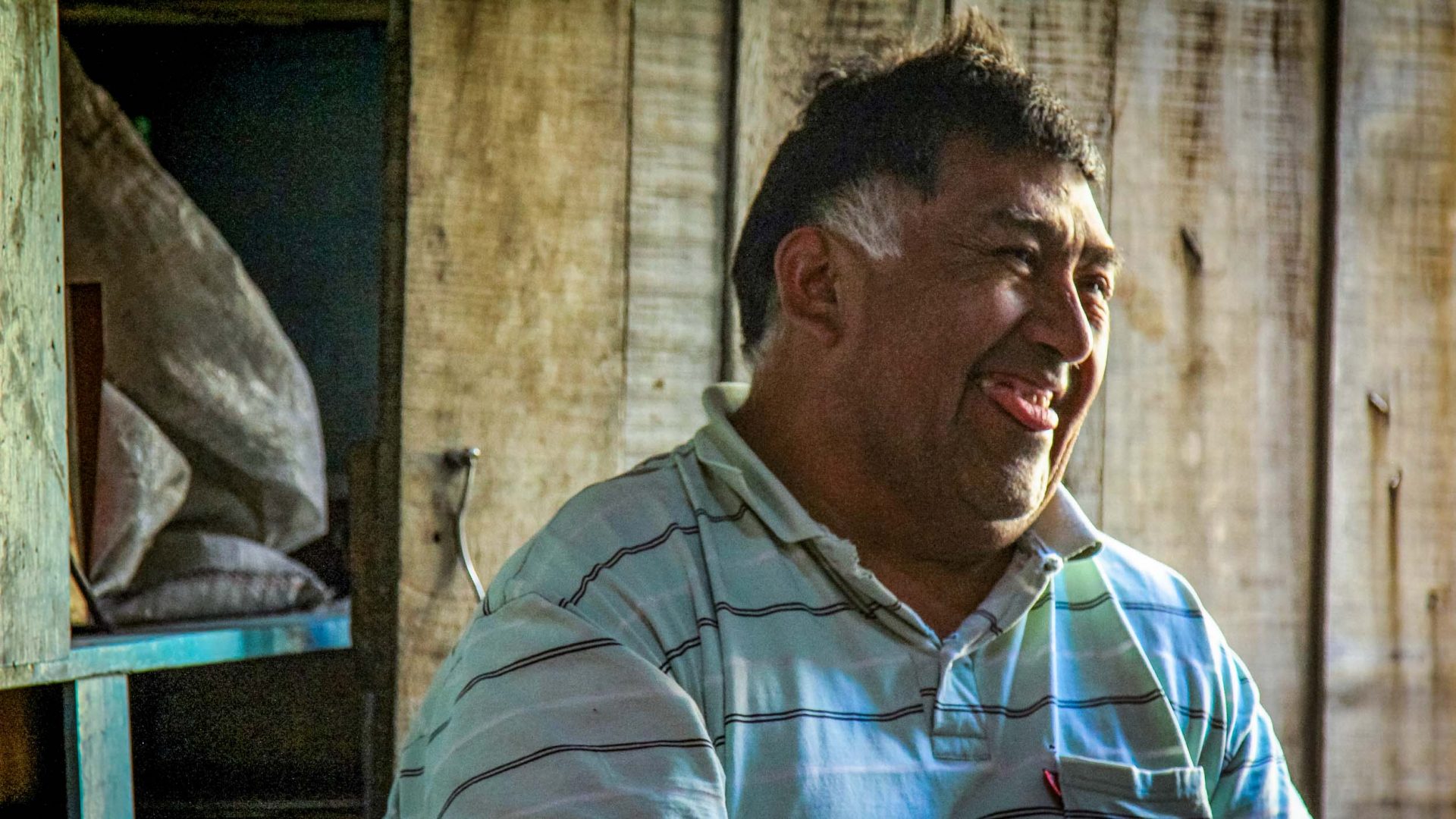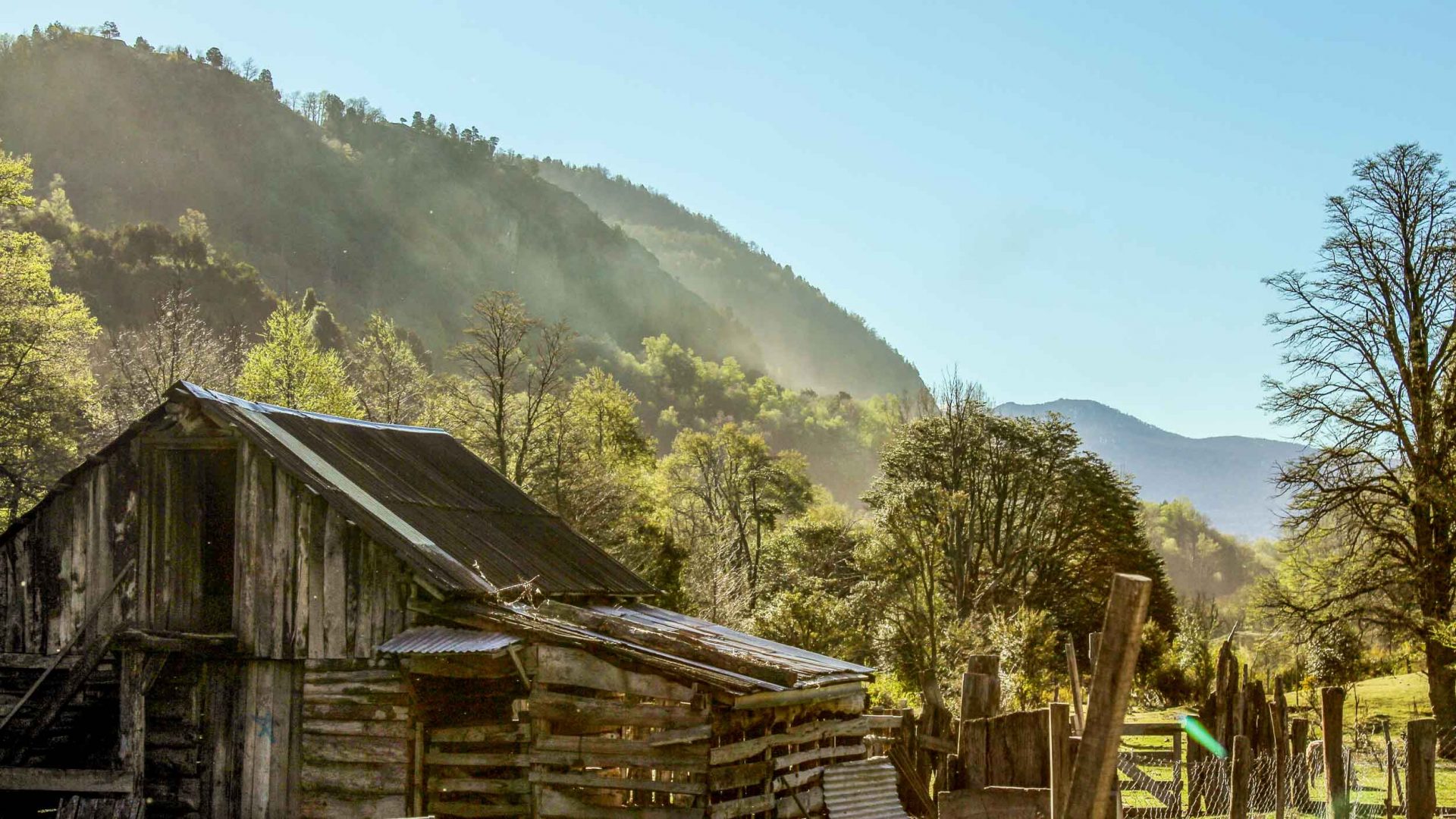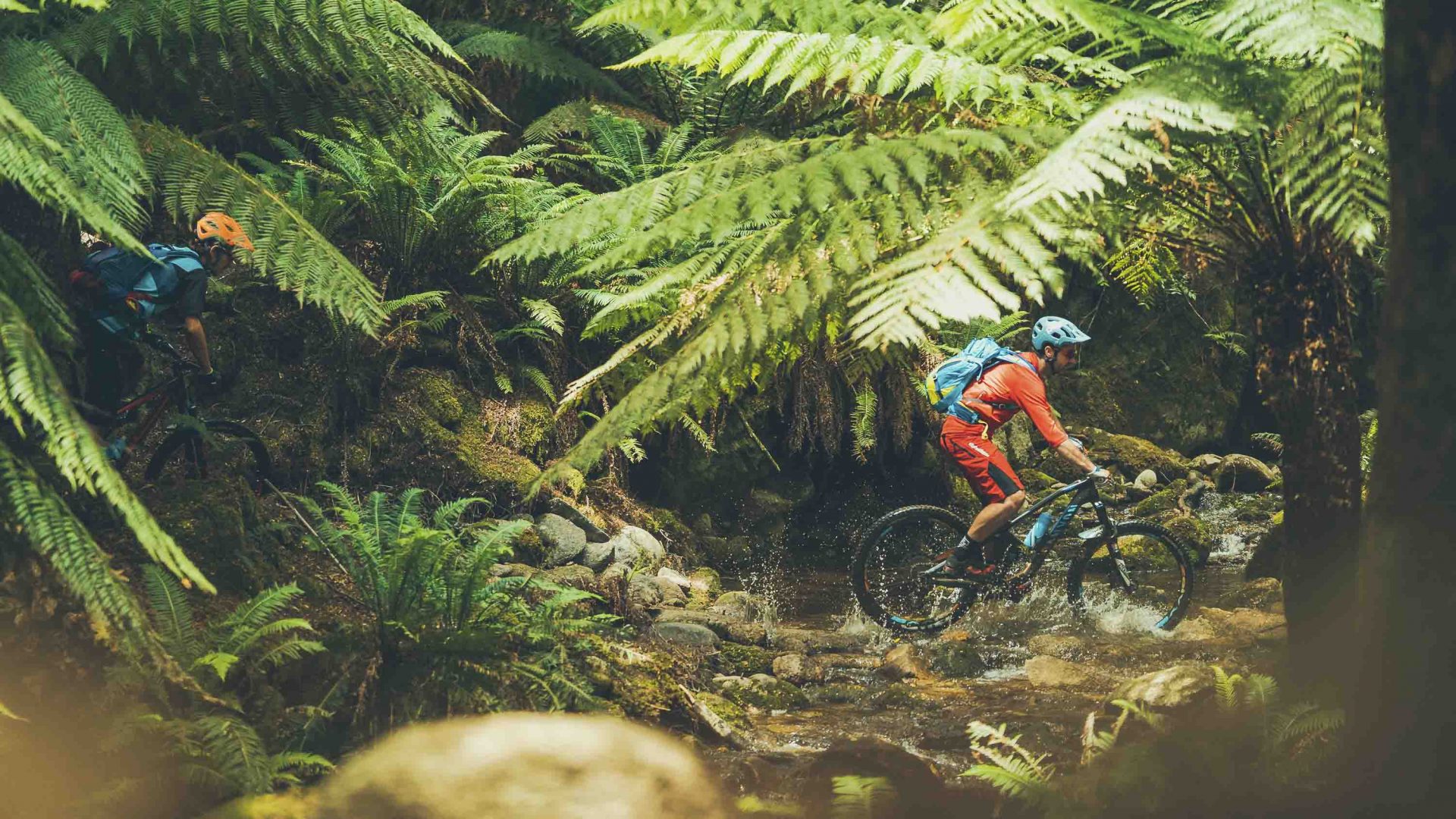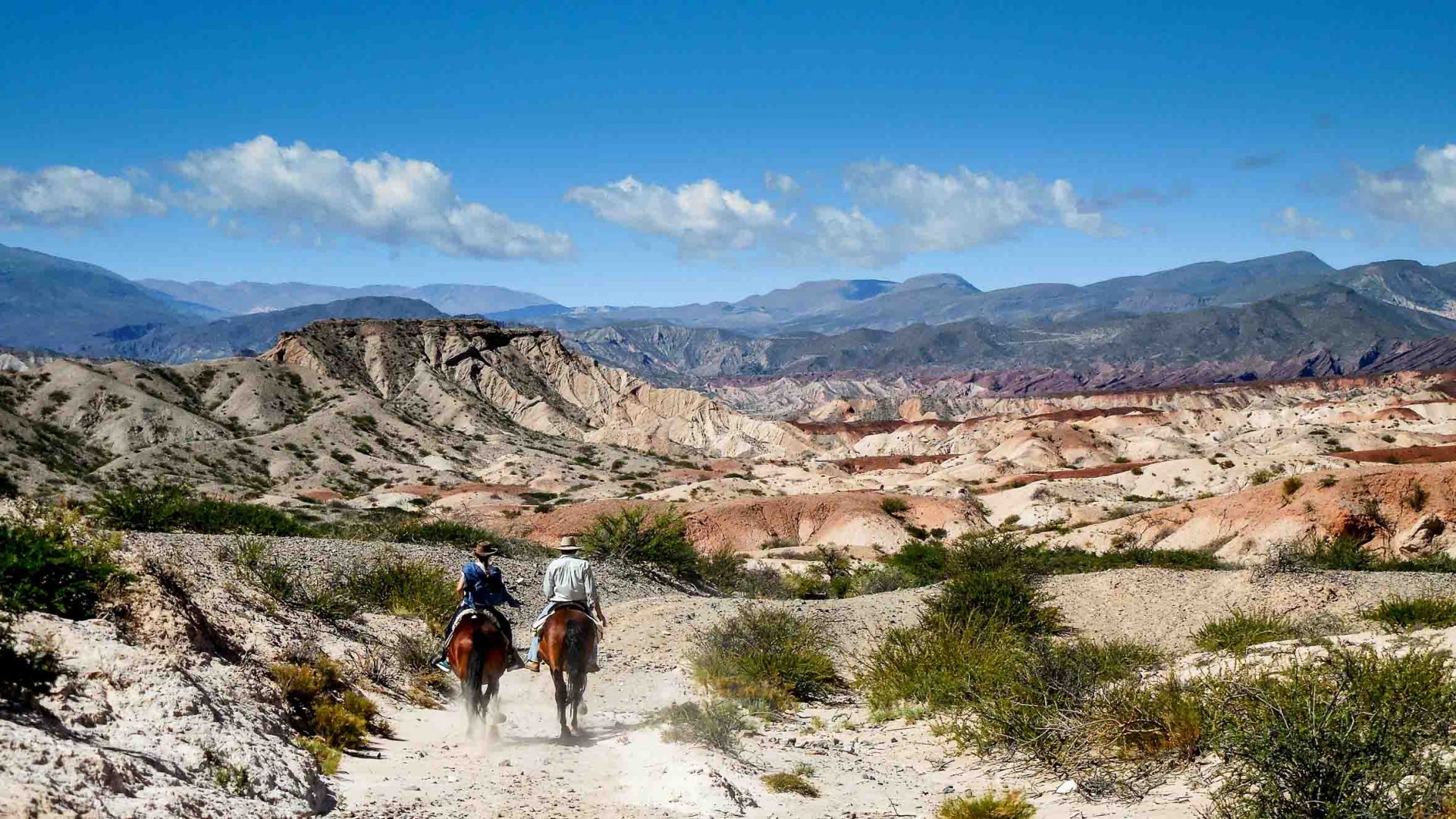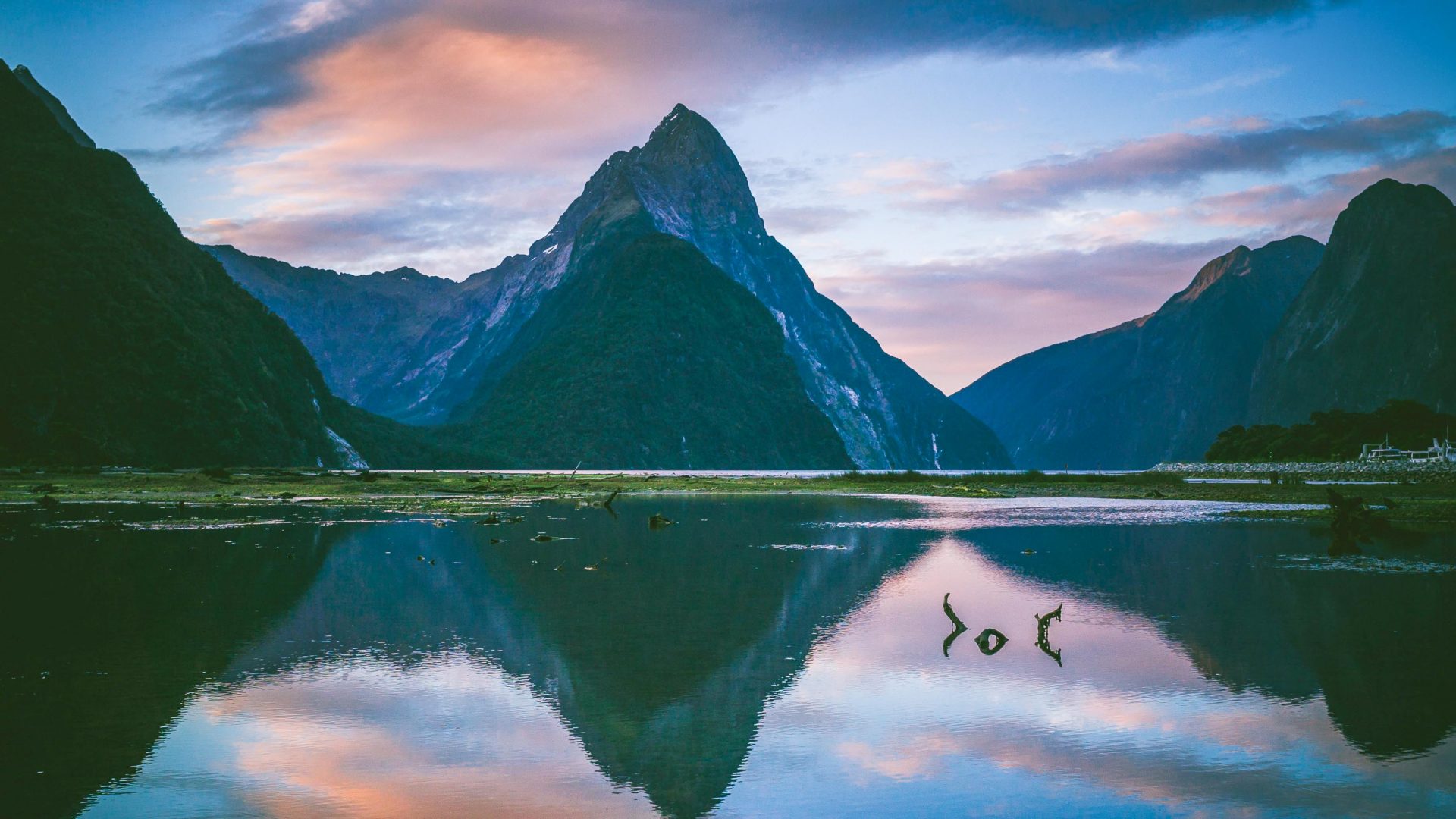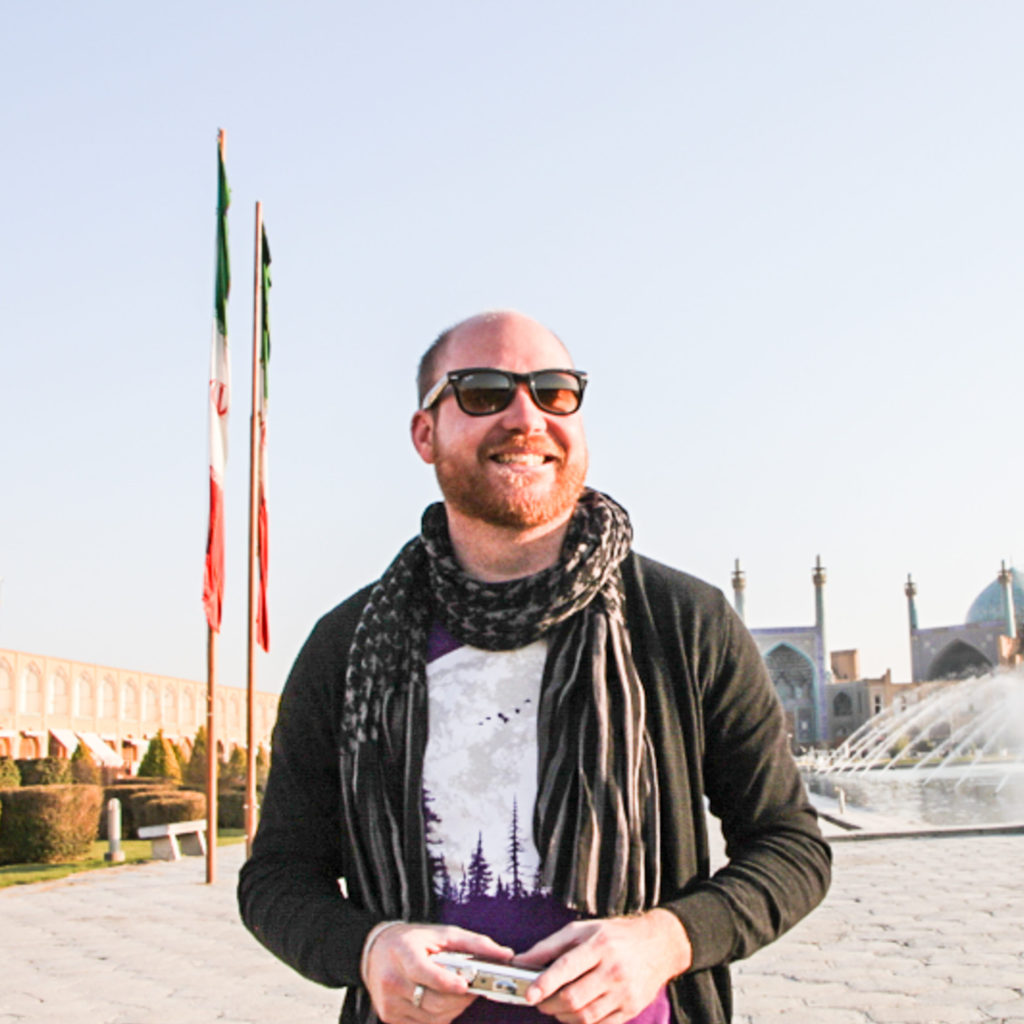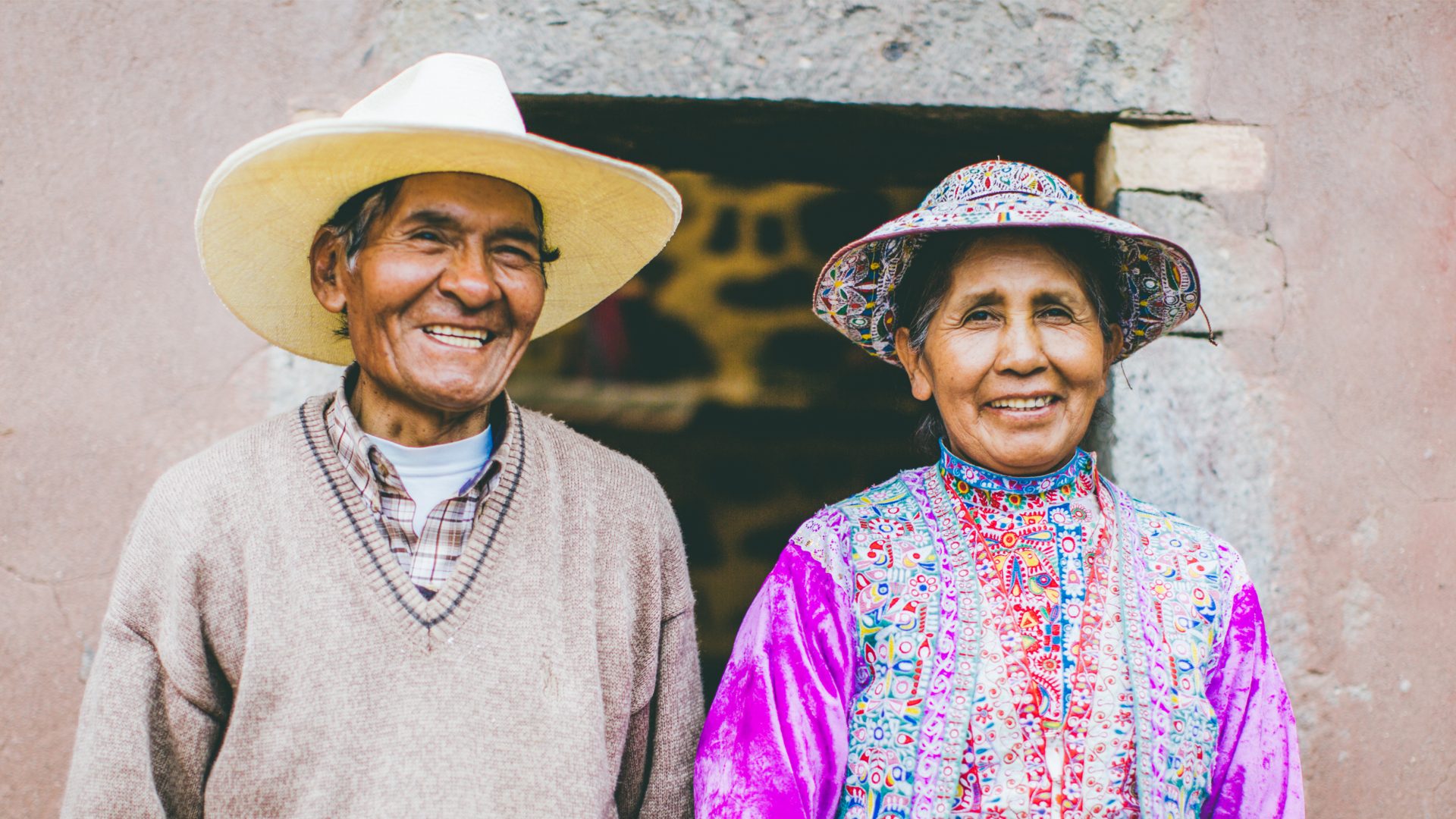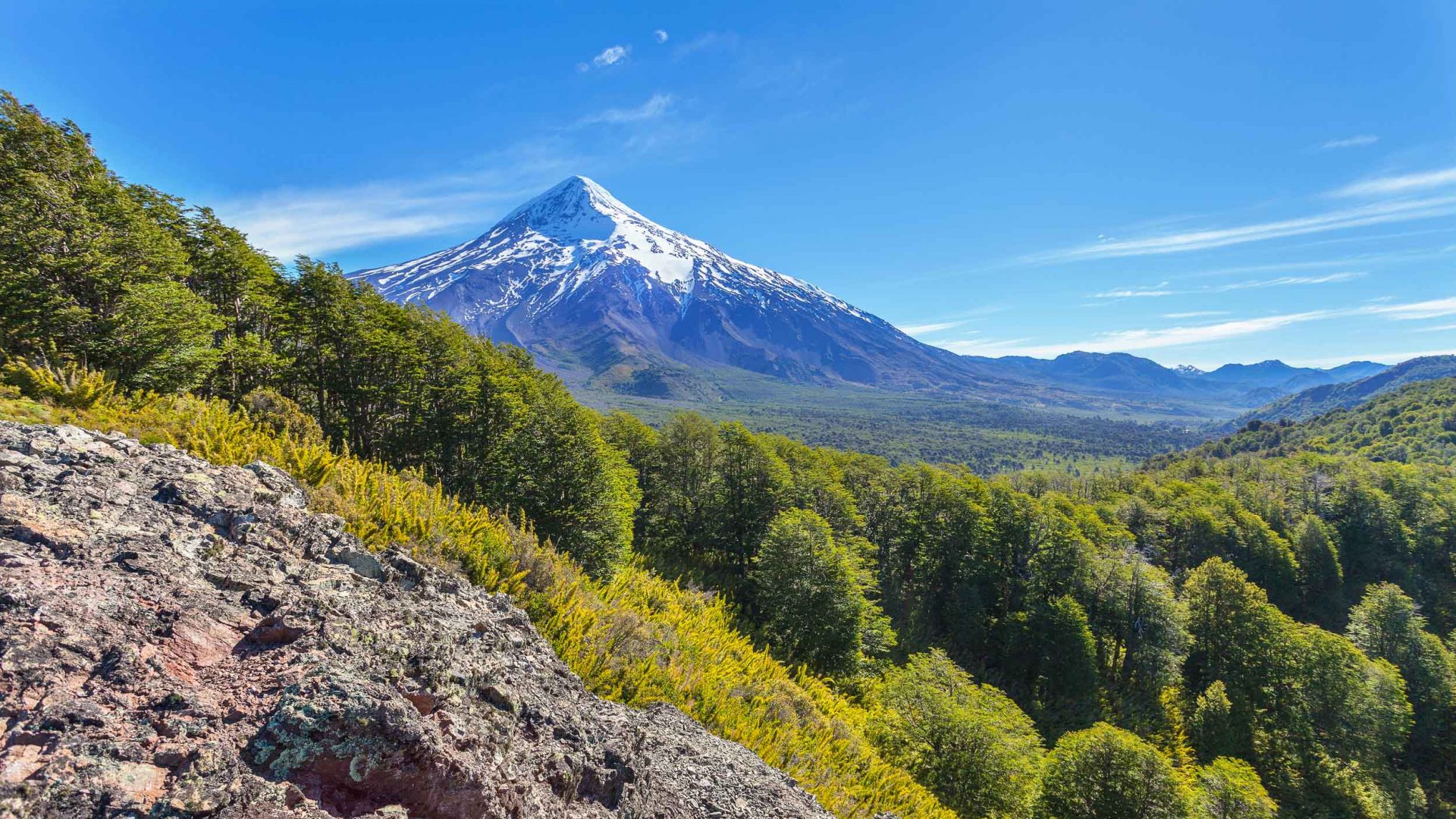
It has all the trappings of Patagonia: Towering volcanoes, glacial lakes, soaring mountains and scenic trails. But unlike its neighbor Bariloche, San Martin de Los Andes isn’t making headlines—yet.
We’d only been hiking for about 90 minutes when we reached a rocky clearing. Although steep in parts, the hike up the small mountain wasn’t terribly technical. The remnants of that winter’s snowfall obscured the trail in many places, forcing us to improvise our way through thick evergreen forest and occasionally find ourselves thigh-deep in icy snow. While the uphill slog wasn’t enough to leave me breathless, the view did. It was as if an Argentinean deity, a postcard-maker and a group of Instagrammers had conspired to create the perfect travel photo.
A cloudless blue sky served as the background for the snowcapped Lanín volcano, which at 12,467-foot-high (3,800 meters) is the highest peak in this part of Patagonia. There are several smaller peaks to the north and the gorgeous deep-blue Lago Tromen; the border with Chile lay a stone’s throw to the northwest. And it’s because of all this that travelers are starting to flock to the nearby town of San Martín de los Andes, quietly becoming the newest adventure sports mecca in South America.

